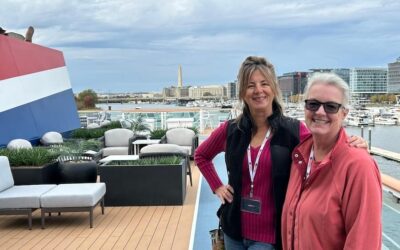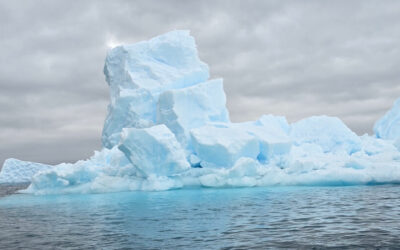You like cruising; we like cruising. It’s a decidedly comfortable and convenient way to see exciting new destinations and to revisit our favorite places. Perhaps it’s the draw of stepping ashore on a half-dozen islands of the Mediterranean or far out in the South Pacific; sailing into impossibly deep Norwegian fjords or one that dead-ends at a majestic Alaskan glacier. What about cruising down a lazy river and looking up at vineyards that produce Austrian, French or Washington wines — that may just appear on the dinner table, then several hours later landing at Vienna, Bordeaux or at the beginning of Hells Canyon in Idaho.
At the very bottom of a spinning globe, the white continent of Antarctica beckons, and at the top, the intriguing possibility of island hopping from the Faroes to Iceland to Greenland to Newfoundland to Manhattan. Most of the world’s great cities are dotted along the coasts of the Baltic, the Eastern and Western Mediterranean; East and Southeast Asia, Australia and New Zealand, down South America way — and closer to home, from Eastern Canada down to Florida and Mexico south to Central America.
When we mention cruising to friends and acquaintances, often the first reaction is do you really take to those floating apartment blocks and sharing your travel plans with hundreds, often thousands of other people?
Yes, it’s indeed the megaships that drive and define what cruising seems to be about, offering all the amenities of a major resort within a thousand feet of your cabin door and overnight delivering you to another popular port.
We have experienced the allure of the newest and latest giants of the seven seas — then for a long period of time we began to narrow our interests to what we really like about cruising — heading to parts of the world we want to see and sharing it with family, friends and new friends who like a small ship atmosphere. We like the intimacy of being close to the water, taking but a few steps and we are out on deck, visiting both well known and off the beaten track ports, and the ease of getting on and off the ship and taking in the expert interpretation of the historians and naturalists who travel with us.
The cruise industry tends to define small ships as those with capacities up to about 800 passengers, mid-size ships to roughly 1,800 and the large on up to over 6,000, not including an additional 2,000 more as crew. For purposes of QuirkyCruise, we cap the passenger count at 300, with a few exceptional exceptions, and the majority will be half that number. We present a varied lot of ships — oceangoing; coastal; river and canal; expedition and soft adventure; sailing and motor sailing ships; and yachts where you book as a group or as individuals. To give you a rough idea of cost, in each ship/line review we use a dollar sign system: $ = Moderate (up to $300 per person per day); $$ = Expensive ($300 – $600 per person per day); and $$$ = Very Pricey ($600+ per person per day).
Most of these smaller vessels get lost in the shuffle when it comes to getting their names out to potential passengers as the published cruise guides, print media and web sites emphasize the big ones. The small fry don’t have large advertizing budgets.
We don’t expect small ship aficionados to like all types of small-ship cruising, but we intend to present what we feel is most attractive about what they offer, where they go and who else might be aboard, from adventure seekers to those who yearn to know more about our ever-changing world, multi-generational families or the happily retired and semi-retired with time and disposable income.









 HEIDI SARNA
HEIDI SARNA











